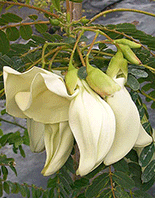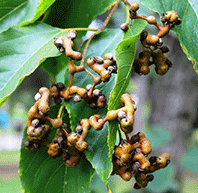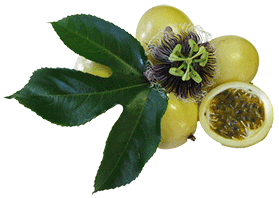| Organic Seeds | Edible Plants | Organic Pest Controls | Books | Tools, Propagation & Fertilisers | Sprouting & Microgreens | Poultry Supplies | Specials & Gift Ideas |

Top

We will send an email to this address*
when is next available
* we will use this email address only for this notification and then we will delete it.
 Home
Home
Green Harvest Organic Gardening Supplies is permanently closed as of 5pm on 1-11-2023.
We will not be taking orders by this website, in person, by phone or email. Our display garden and retail shop are closed forever.
Read more...
Phone:07 54357000
Phone calls will only be responded to sporadically and only in reference to orders placed prior to 2-11-2023. All the useful growing and organic pest management research and resources are available on this website for a while still.
|
|
 Agati
H
Agati
H
 UT
UTSesbania grandiflora Syn. vegetable hummingbird, agathi, West Indian pea Agati is a fast growing, tropical legume tree to 10 m high with beautiful, large white flowers. It does best in warm humid areas and will not tolerate temperatures below 10°C or frost. It is useful as a shade or nurse tree for other crops, such as black pepper. The leaves can be cut as animal (ruminant) fodder but avoid cutting the main stem. The young leaves, flowers and tender pods contain 25-30% crude protein and are favourite Asian vegetables. Remove the centre of the flowers before eating to reduce bitterness. Suitable for subtropical and tropical areas; unsuitable for temperate areas. More growing information... SA101 (approx. 14 seeds per pkt.) Agati plants are available seasonally. |
 Cherry Guava syn. Strawberry Guava
UT
Cherry Guava syn. Strawberry Guava
UTNo TAS / WA Psidium littorale syn. P. cattleianum Cherry Guava is an evergreen shrub with white flowers that bloom in late spring. Fruit is round, plum-sized, deep wine-red, with a very thin skin. The flesh is juicy with a sweet flavour. Cherry guavas dislike low temperatures but will tolerate some frost and are hardier to cold than the common guava. The fruit can be eaten raw and is high in Vitamin C; it is also used in jellies, drinks and jams. The plant is useful as a fruiting hedge, poultry forage and windbreak. More growing information... SC143 (approx. 20 seeds per pkt.) SC685 SC686 Cherry Guava plants are available seasonally. |
 Cherry Guava 'Gold'
UT
Cherry Guava 'Gold'
UTNo TAS / WA Psidium littorale syn. P. cattleianum Cherry Guava 'Gold' is a less common form of cherry guava but otherwise grows in a similar way. It is an evergreen shrub with white flowers that bloom in late spring. Fruit is round, plum-sized, golden yellow, with a very thin skin. The flesh is juicy with a sweet flavour. Cherry guavas dislike low temperatures but will tolerate some frost and are hardier to cold than the common guava. The fruit can be eaten raw and is high in Vitamin C; it is also used in jellies, drinks and jams. The plant is useful as a fruiting hedge, poultry forage and windbreak. More growing information... SC220 (approx. 20 seeds per pkt.) SC699 SC684 Cherry Guava plants are available seasonally. |
 Japanese Raisin Tree
UT
Japanese Raisin Tree
UTHovenia dulcis Japanese Raisin Tree syn. Chinese Raisin Tree is an ornamental shade tree well-suited to the home garden and school playgrounds. It grows well with little care and attention. A deciduous tree, it grows to a height of 6 - 9 m with a spread of 4 m. It is suited to temperate and subtropical climates and is very hardy to cold. It produces copious quantities of sweet, raisin-like, edible fruit. It is tolerant of wide range of soil types but prefers good drainage. Space trees 4 m apart in full sun. More growing information... SJ100 (approx. 10 seeds per pkt.) Are you looking for Japanese Raisin Tree plants? |
 Moringa
H
UT
Moringa
H
UTMoringa oleifera Syn. Horseradish Tree, Drumstick Tree, Ben Tree, Miracle Tree Moringa is a semi-deciduous tree to 8 m high and 3 m wide. It is a hardy, shrubby tree with fern-like leaves and white, fragrant flowers. The pungent roots are used as a substitute for horseradish; the young leaves are eaten as cooked greens and the immature pods have an artichoke flavour and are eaten in a similar way. The leaves are very nutritious, high in vitamins and with up to 38% protein. The flowers are attractive to bees. The seeds are used for water purification. The seeds germinate best between 25 to 30°C soil temperature, sow late spring in subtropical areas. It will grow in sun to partial shade but needs a well-drained soil. It is suitable for subtropical and tropical areas; unsuitable for temperate areas. More growing information... SM215 (approx. 15 seeds per pkt.) Are you looking for Moringa plants? |
|
Passionfruit
Passionfruit are vigorous vines, growing from 6-10 m tall. Grow the vine in full sun, sheltered from cold winds. Passionfruit prefer a fertile, well-drained soil with plenty of organic matter, add lime if the pH is below 5.5. Mulching and regular watering are beneficial. Crops are produced from late autumn to early summer, when ripe, the fruit will fall to the ground. Prune in late winter to thin over-vigorous growth. Sow seed in spring and summer when the soil temperature reaches more than 20°C. A strong support is needed for the vine to grow on. |

 Passionfruit 'Panama Gold'
UT
Passionfruit 'Panama Gold'
UTPassiflora edulis ssp. flavicarpa An evergreen vine producing very large, yellow-skinned passionfruit with a juicy, aromatic pulp that is generally sweeter than black passionfruit. Eat fruit raw or use it in desserts, jam and cordial; it is a good source of vitamin A and C. 'Panama Gold' doesn't require 2 plants to set fruit but crops may be more abundant with cross pollination. Passionfruits have shallow, spreading roots so regular mulching and watering are beneficial. It does well in subtropical and tropical areas, in temperate areas it requires a warm, sheltered position and may lose its leaves during winter. Tip-prune after harvest, in cold areas wait for spring to prune. SP177 (approx. 25 seeds per pkt.) SP296 Are you looking for Passionfruit plants? |
 Tamarillo 'Ecuadorian Orange'
UT
Tamarillo 'Ecuadorian Orange'
UTCyphomandra betacea syn. Tree Tomato, tomate de árbol Produces abundant quantities of sweet, tangy fruit over a long season. The flesh of the orange tamarillo is sweeter than red types and a good source of Vitamin C. It is a small tree 3 - 5 m high that can live up to 12 years. It is a good fill-in plant as it only takes 18 months to produce the egg-shaped fruit. In the kitchen it can be used to make jam or chutney, added to salads, poached in syrup as a dessert or to make salsa. It is frost tender and needs a very well-drained soil. It is suitable for subtropical and tropical areas. More growing information... ST244 (approx. 20 seeds per pkt.) Are you looking for Tamarillo plants? |
|
Information on Fruit Trees for Small Gardens is available here.
|
At Green Harvest we are passionate about open-pollinated, heirloom seed as we believe it is a resource belonging to all people,
not a product to be exploited by a few. Open-pollinated vegetable seeds are genetically diverse treasures that have been passed
on from generation to generation of gardeners. We invite you to contact us
if you would like to help us preserve open-pollinated seed varieties in Australia.
More information on seed saving...
|
Green Harvest specialises in seeds which are:
|
A
free
Successful Seed Raising Guide is included with your first seed order from Green Harvest.
Seed to WA:
A $6.95 Quarantine Fee will be charged for all seed orders to WA. Green Harvest is sharing the cost of
the quarantine fee with all our WA customers.
Read more...
 Home
Home
Green Harvest Organic Gardening Supplies is permanently closed as of 5pm on 1-11-2023.
We will not be taking orders by this website, in person, by phone or email. Our display garden and retail shop are closed forever.
Read more...
Phone:07 54357000
Phone calls will only be responded to sporadically and only in reference to orders placed prior to 2-11-2023. All the useful growing and organic pest management research and resources are available on this website for a while still.
We guarantee our seeds to the value of the purchase price. We are happy to replace the seeds, give you a credit or refund, whichever you prefer. Other than our guarantee to the extent of the purchase price Green Harvest gives no other warranty expressed or implied. No liability will be accepted by Green Harvest, its owners or employees as to the accuracy of any information. No responsibility will be taken for damage to property or persons due to information given about a product or technique. No responsibility will be taken for the loss of a crop or income due to information given about a product or technique.
 Shopping here is private and secure.
Shopping here is private and secure.
Copyright © 2001 - 2024 Green Harvest Organic Gardening Supplies
No part of this website may be reproduced without permission of the owner

